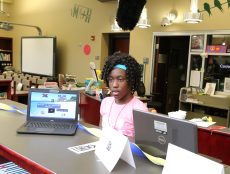
For education to be successful in transforming our global community, it must be accessible – and that is what open-source technologies bring to the world of learning. By definition, open-source software has freely available code that can be redistributed and modified without limitation. Unlike closed-source software, which does not share its code and must be licensed, open-source software alleviates one of the most pressing barriers to education across the globe: cost.
Editor’s note: The terms ‘open’ and ‘open-source’ are controversial. Developers and vendors use them to denote a variety of meanings. In many cases, open source software does carry a lower net cost than proprietary alternatives. But that is not always the case. Click here to read more about the varying degrees of ‘open-ness’ and examples of open-washing.
At the forefront in the open source education space has been Moodle™, which, since its inception in 2002, has helped revolutionize the education space as we know it by providing educators with a free tool to support learning in various forms. At the time of writing, there are almost 260 million users on over 180,000 registered Moodle™ sites across the globe relying on this platform to power their initiatives. This is exponentially more users and institutions than use any other platform. For many, this would not be possible if it were not open source.
As an open-source platform, Moodle™ allows organizations and institutions to host the software themselves or partner with one of the many Moodle™ experts in the education technology space, like Open LMS, to grow their online learning presence and experiment creatively with how they can present information and education opportunities to their learners. This flexibility simply doesn’t exist with proprietary platforms.
In short, this openness in education makes education accessible to more learners worldwide and it also encourages product development at a faster rate that is in tune with the market’s needs. That said, openness as a value in education has become more important than ever, especially in the last year, as many organizations and institutions had to bring learning online in order to continue providing important resources and learning opportunities to their constituents during the COVID-19 pandemic.
Do You Have to Be 100% Open to Be Considered Open?
However, there is a lot of muddiness in the LMS space about what open source actually means. Many organizations provide enhancements and some proprietary code that serve as unique elements that add more value for users, but that small portion of code not being fully open-source does not affect the ability for anyone to use, launch, or expand on its core offering.
It is easy to demonize organizations that do not open source every piece of their code, but I believe that only serves to discourage organizations from open-sourcing any of their code. In order to put the time and effort into creating and maintaining that open-source code, the truth is that organizations still need to make money, which often comes from additional services and elements that may not be included in their open-source offerings. As a global learning community, it is much more beneficial to encourage all groups to participate in the open-source project in any way they are able. This culture will truly pay dividends for the larger open-source community, which will be able to leverage and build from these contributions.
⭐After a successful close to the first quarter, we continue momentum in the #LMS market with a new strategic direction. https://t.co/UOElszjv6d#edtech #elearning #edtechchat #onlinelearning #education #digitallearning #thefutureoflearning
— Open LMS (@Open_LMS) April 20, 2021
The impact of open technology has been clear in the way the community has rallied together to share new ways to address our common challenges and celebrate learning success stories during the pandemic. The extremely diverse and ever-growing communities that support open-source technologies are full of people who are passionate about learning, educational experimentation, and – most importantly – the success of learners.
In these communities, individuals and organizations share eLearning best practices, contribute improvements to software code, push forward functionality that addresses a variety of market needs, and problem solve with others to improve education opportunities across the globe. In this way, open source encourages a grassroots method of improving education accessibility by making software and code improvements freely available alongside a variety of support resources like forums, blogs, how-to videos, and other resources that are created and maintained by an open community.
Personally, it is an honor for me to be a small part of this community. I am incredibly proud to have worked for and with companies who have given so much to the cause of championing open-source technologies and have made it part of their mission to continue to further projects to improve technology not only for their clients, but for the world. We, as members of the eLearning community, have a duty to participate in and contribute towards open-source learning technology projects. Our responsibility remains to the global community that relies on open-source technologies to continue to make sure that they are successful in their teaching, learning, and development goals.
What Does It Mean for Us to Participate in the Open-Source Community?
For us at Open LMS, it means open-sourcing more of our code than we have in the past several years. Though our solutions are all based on open-source Moodle™ and we have continuously participated in the project, we have not had a focus on open-sourcing our unique code. That is something we have dedicated to do more this year by progressively releasing all of our code for our products, including Open LMS Work, which includes unique features designed with workplace learners in mind.
Open sourcing our code is a labor of love, and not one that is without additional work. You may think, “Well, you just need to release it right?” But it actually takes significant time and dedication for our team to separate the code, provide resources and documentation so that people know what that code can do, maintain relationships with the community using the code, and more. When an organization takes the step to open source their code, they are making a commitment to dedicate working hours to serving a global community that expands far past their paying customers because they feel called to increase the accessibility of software and to help more users reap the benefits of open-source technologies.
Possibly most importantly, we and the whole learning community need to continue to focus on and encourage the push for more accessibility within education and the technology and learning content that supports it. Openness goes far beyond code access. Openness is about ensuring equality and availability of learning opportunities and that is the root of why open-source software is so important. Open-source software allows people across the globe to push the boundaries of what could be achieved and how learning opportunities can be brought to more learners.
Participating and engaging in the open-source community is a value that is shared not only across Open LMS’s leadership and employees, but broadly across our parent company Learning Technologies Group (LTG) and its leadership. Recently, Open LMS has merged with two additional powerhouse teams, allowing us to expand our collective knowledge and ultimately the benefit we can provide to our clients and the whole open-source education technology community. We have a strong desire to be a force for good in this community and to continue to push forward the open-source mission of our organization and other education technologies. We can be that force and so we will, and I invite you to be a part of it too.
Phill Miller is the managing director at Open LMS.
Featured Image: Hans Isaacson, Unsplash.









One Comment